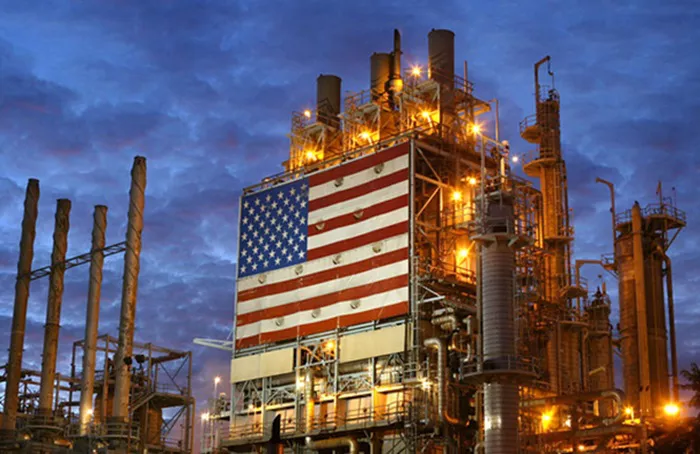The United States has emerged as the largest producer of crude oil globally, surpassing other major oil-producing countries such as Saudi Arabia and Russia. This achievement is due to a combination of technological advancements, significant investments, and the development of extensive oil reserves. This article provides an in-depth look at U.S. crude oil production, exploring the current statistics, key regions, technological innovations, and economic impacts.
Production Statistics
Current Production Levels
As of 2024, the United States produces approximately 13 million barrels of crude oil per day (bpd). This volume represents a significant portion of global oil production and underscores the U.S.’s dominant position in the global energy market.
Daily Production: 13 million bpd
Annual Production: Approximately 4.75 billion barrels
This production level has placed the U.S. ahead of Saudi Arabia and Russia, which produce around 10 and 11 million bpd, respectively.
Historical Trends
Early 2000s: U.S. production was around 5 million bpd, largely dependent on conventional oil sources.
Mid-2000s: Introduction of hydraulic fracturing (fracking) and horizontal drilling led to a dramatic increase in production.
2010s: Peak production reached approximately 12.8 million bpd by 2019 before experiencing fluctuations due to market dynamics and the COVID-19 pandemic.
2024: The production has stabilized at around 13 million bpd, driven by advancements in technology and efficient extraction methods.
Major Oil-Producing Regions in the U.S.
Permian Basin
Location: Western Texas and Southeastern New Mexico
Production Volume: Approximately 5 million bpd
Characteristics: The Permian Basin is the most prolific oil-producing region in the U.S. Known for its extensive reserves and advanced extraction techniques, it contributes significantly to the country’s total oil production. The region benefits from favorable geology, including thick, high-quality oil-bearing rock layers.
Bakken Formation
Location: North Dakota and Montana
Production Volume: Around 1.5 million bpd
Characteristics: The Bakken Formation has become a major source of U.S. oil production, primarily through horizontal drilling and fracking. It features vast reserves of shale oil and has seen substantial investment in infrastructure and technology to optimize extraction.
Eagle Ford Shale
Location: South Texas
Production Volume: Approximately 1.3 million bpd
Characteristics: The Eagle Ford Shale is known for its high-quality crude oil and extensive reserves. The region has benefited from technological advancements and investments in infrastructure, such as pipelines and processing facilities.
See also: Has the French Oil Market Been Affected by the 2024 Olympics?
Technological Contributions
Hydraulic Fracturing
Hydraulic fracturing, or fracking, involves injecting a mixture of water, sand, and chemicals into underground rock formations at high pressure to release oil and gas. This technique has transformed U.S. oil production by making it possible to access previously untapped shale reserves.
Benefits: Increases the flow of oil and gas from underground formations, enhances recovery rates, and makes previously unproductive wells viable.
Challenges: Environmental concerns, including potential groundwater contamination and induced seismic activity.
Horizontal Drilling
Horizontal drilling allows drillers to access a larger portion of a reservoir compared to traditional vertical drilling. This technique involves drilling wells horizontally through oil-bearing rock layers, which maximizes production and efficiency.
Benefits: Enhances the amount of oil extracted from a single well, reduces the number of wells needed, and minimizes surface disruption.
Technological Integration: Often used in conjunction with hydraulic fracturing to improve overall extraction efficiency.
Economic and Market Implications
Influence on Global Oil Prices
The U.S. plays a crucial role in stabilizing global oil prices. With its substantial production capacity, the U.S. helps counterbalance fluctuations caused by OPEC and other major producers.
Price Stability: The increase in U.S. production has contributed to more stable global oil prices, reducing volatility and providing a buffer against supply disruptions from other regions.
Energy Security and Independence
The surge in U.S. oil production has led to greater energy independence, reducing reliance on foreign oil sources.
Energy Security: By increasing domestic production, the U.S. has enhanced its energy security and decreased vulnerability to geopolitical tensions and supply disruptions.
Economic Impact
The growth of the oil industry has had significant economic effects, including job creation, investment in infrastructure, and stimulation of local economies.
Job Creation: The oil sector has created thousands of jobs in drilling, extraction, transportation, and support services.
Infrastructure Investment: Investments in pipelines, refineries, and processing facilities have bolstered economic activity and development in oil-producing regions.
See also: What Country in the Arabian Peninsula Is the World’s Largest Producer and Exporter of Crude Oil?
Future Outlook
Projected Production Trends
Future U.S. oil production will be influenced by several factors, including technological advancements, market conditions, and regulatory changes.
Technological Innovations: Continued advancements in drilling and extraction technologies are expected to sustain production levels and improve efficiency.
Market Dynamics: Fluctuations in global oil demand, prices, and competition from other oil-producing countries will impact production trends.
Policy and Regulatory Changes
Government policies and regulations related to energy production, environmental protection, and climate change will play a crucial role in shaping the future of U.S. oil production.
Regulatory Landscape: Changes in environmental regulations and climate policies may influence production practices and investment decisions.
Global Competition
The global oil market is competitive, with other countries investing in their own oil production capabilities.
Emerging Producers: New oil-producing countries and regions may affect the U.S.’s market share and influence in the global oil industry.
Conclusion
The United States’ position as the world’s largest crude oil producer is a result of technological advancements, significant investments, and the development of key oil-producing regions. This status has profound implications for global oil markets, energy security, and economic stability. As the industry continues to evolve, the U.S. will remain a pivotal player in shaping the future of global energy production and consumption.
Related Topics:

